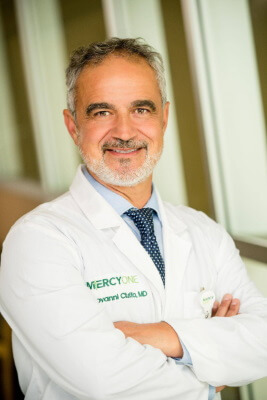
In the realm of cardiac and thoracic surgeries, advancements in surgical techniques have led to the development of minimally invasive approaches that offer several advantages over traditional open-heart procedures. Two of these minimally invasive techniques, minithoracotomy, and ministernotomy, have gained prominence in recent years.
Minithoracotomy Vs. Ministernotomy
While both approaches share the common goal of reducing trauma to the patient, they differ in their specific methods and applications. Here at Minimally Invasive and Bloodless Heart Surgery with Dr. Ciuffo, we will explore the key differences between minithoracotomy and ministernotomy to help you better understand these innovative surgical options.
Minithoracotomy
Minithoracotomy is a minimally invasive surgical approach that involves making a small incision between the ribs to access the thoracic cavity. It is commonly used for various cardiac and thoracic procedures, including but not limited to coronary artery bypass grafting (CABG), mitral valve repair or replacement, and lung surgeries.
- Incision Placement
One of the primary distinctions of minithoracotomy is the location of the incision. The surgeon makes a small (typically 2-4 inches) horizontal incision on the lateral side of the chest, between the ribs, often below the nipple line. This approach allows access to the heart or lungs without splitting the breastbone (sternum).
- Use of Rib Spreaders
Minithoracotomy may require the use of rib spreaders to gently separate the ribs and create a working space. While this temporarily widens the ribcage, it is less traumatic than a full sternotomy.
- Versatility
Minithoracotomy is versatile and can be used for various cardiac and thoracic procedures. Surgeons can access different areas of the heart and lungs, depending on the specific surgical goal.
- Reduced Pain and Faster Recovery
Patients who undergo minithoracotomy often experience less pain, reduced scarring, and a faster recovery compared to traditional open-heart surgery. Smaller incisions and less manipulation of tissues contribute to these benefits.
Ministernotomy
Ministernotomy, on the other hand, is another minimally invasive approach used primarily for cardiac surgeries, especially those involving the heart’s valves or coronary arteries. Unlike minithoracotomy, ministernotomy involves accessing the chest through a partial incision of the sternum (breastbone).
- Incision Placement
In a ministernotomy, a small vertical or J-shaped incision (typically 3-4 inches) is made in the upper part of the sternum. This incision allows access to the heart while minimizing sternal trauma.
- Use of Sternum-Spreading Techniques
During a ministernotomy, the sternum is only partially divided or spread apart, rather than being fully cut open. Various specialized instruments and techniques, such as rib retractors, are used to create a small opening.
- Cardiac-Specific Procedures
Ministernotomy is often chosen for specific cardiac procedures, such as aortic valve replacement or repair, mitral valve surgery, and coronary artery bypass grafting. It offers precise access to the heart, allowing surgeons to perform intricate cardiac interventions.
- Reduced Risk of Infection
Ministernotomy’s smaller incision and reduced manipulation of the chest cavity may lead to a lower risk of postoperative infections compared to traditional sternotomy.
- Cosmetic Considerations
Ministernotomy tends to result in a more cosmetically appealing scar due to its smaller incision size and location. The National Library of Medicine suggests over the past 20 years, this type of surgery has been advocated in an effort to reduce costs related to hospital stay, and to improve the cosmetic results.
Contact Dr. Ciuffo Today
Both minithoracotomy and ministernotomy offer patients less invasive options with reduced pain, shorter hospital stays, and quicker recoveries compared to traditional open-heart surgery.
Ultimately, the choice of surgical approach should be determined through careful consultation between the patient and their surgeon. Visit our website to make an appointment, or call our office at (702) 333-7200 to speak with a team member. For additional information about our practice, please visit Nevada Heart and Vascular or University Medical Center.

